Volume 2
Displaying 1-13 of 13 articles from this issue
- |<
- <
- 1
- >
- >|
-
Article type: Cover
1999Volume 2 Pages Cover1-
Published: September 15, 1999
Released on J-STAGE: August 07, 2017
Download PDF (19K) -
Article type: Index
1999Volume 2 Pages Toc1-
Published: September 15, 1999
Released on J-STAGE: August 07, 2017
Download PDF (35K) -
Article type: Appendix
1999Volume 2 Pages App1-
Published: September 15, 1999
Released on J-STAGE: August 07, 2017
Download PDF (45K) -
Article type: Article
1999Volume 2 Pages 1-21
Published: September 15, 1999
Released on J-STAGE: August 07, 2017
Download PDF (1334K) -
Article type: Appendix
1999Volume 2 Pages App2-
Published: September 15, 1999
Released on J-STAGE: August 07, 2017
Download PDF (43K) -
Article type: Article
1999Volume 2 Pages 23-34
Published: September 15, 1999
Released on J-STAGE: August 07, 2017
Download PDF (758K) -
Article type: Article
1999Volume 2 Pages 35-54
Published: September 15, 1999
Released on J-STAGE: August 07, 2017
Download PDF (1611K) -
Article type: Article
1999Volume 2 Pages 55-64
Published: September 15, 1999
Released on J-STAGE: August 07, 2017
Download PDF (721K) -
Article type: Article
1999Volume 2 Pages 65-84
Published: September 15, 1999
Released on J-STAGE: August 07, 2017
Download PDF (1476K) -
Article type: Article
1999Volume 2 Pages 85-104
Published: September 15, 1999
Released on J-STAGE: August 07, 2017
Download PDF (1358K) -
Article type: Appendix
1999Volume 2 Pages App3-_115_
Published: September 15, 1999
Released on J-STAGE: August 07, 2017
Download PDF (556K) -
Article type: Appendix
1999Volume 2 Pages 116-117
Published: September 15, 1999
Released on J-STAGE: August 07, 2017
Download PDF (123K) -
Article type: Appendix
1999Volume 2 Pages App4-
Published: September 15, 1999
Released on J-STAGE: August 07, 2017
Download PDF (19K)
- |<
- <
- 1
- >
- >|
